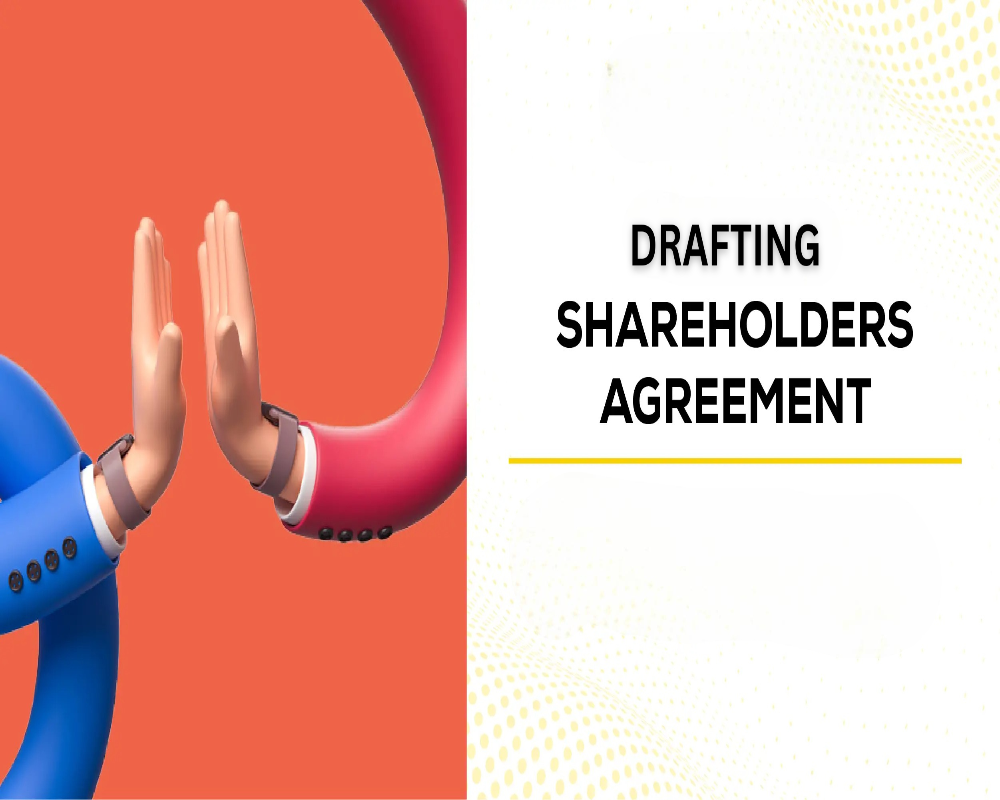Importance of Drafting a Shareholders’ Agreement
Introduction
A shareholders’ agreement is a vital legal document that outlines the rights, responsibilities, and obligations of shareholders in a company. Unlike the Articles of Association (AOA), which are publicly filed and govern the company’s operations, a shareholders’ agreement is a private contractual arrangement that offers clarity and control among shareholders. It becomes especially important in private limited companies and joint ventures where closely held ownership and minority interests must be carefully balanced. This article establishes the importance of drafting a shareholders’ agreement and how it supports smooth business functioning.
Defining Ownership and Capital Contribution
A shareholders’ agreement clearly records the percentage of ownership, the capital contributed by each shareholder, and provisions for future funding. This prevents disputes related to who owns how much of the company, particularly when new shares are issued or when fresh investments are made. It also defines mechanisms for dilution and how future funding rounds will be handled.
Clarifying Rights and Responsibilities
The agreement outlines the specific rights of shareholders, including voting rights, dividend entitlements, and decision-making authority. It may also assign specific responsibilities, especially in closely held businesses where shareholders also act as directors or employees. This clarity helps avoid operational confusion and interpersonal disputes.
Protection of Minority Shareholders
In companies where shareholding is not equally distributed, the agreement serves as a tool to protect minority shareholders from being overruled or sidelined by majority shareholders. It may include veto rights, reserved matters, and tag-along rights to ensure that minority interests are not exploited or ignored in key business decisions.
Exit Mechanism and Share Transfer Terms
One of the most crucial aspects of a shareholders’ agreement is the provision for exit options and share transfer restrictions. It details how and when shares can be sold, whether pre-emption rights apply, and how valuation will be conducted. Drag-along and tag-along rights protect both majority and minority shareholders during company sales, mergers, or exits.
Management and Governance Structure
The shareholders’ agreement helps define the composition of the board, appointment of key personnel, and the process for making strategic decisions. This ensures a balanced and agreed-upon governance structure that aligns with the expectations of all shareholders and minimizes management conflicts.
Dispute Resolution Framework
The agreement typically includes dispute resolution clauses, such as mediation, arbitration, or specified legal jurisdiction. This helps resolve disagreements efficiently and without harming the business. A pre-agreed process can prevent prolonged legal battles that damage both relationships and company operations.
Confidentiality and Non-Compete Clauses
To safeguard sensitive information, the agreement often includes confidentiality clauses that bind shareholders to non-disclosure of company data. It may also contain non-compete and non-solicitation clauses, especially in startups and IP-driven businesses, to prevent shareholders from starting competing ventures or poaching clients and employees.
Alignment of Long-Term Vision
By detailing the goals, exit strategy, and investment objectives, the shareholders’ agreement ensures that all parties are aligned with the long-term vision of the company. This alignment is critical during times of expansion, acquisition, or generational transition and helps maintain a united direction for business growth.
Conclusion
Drafting a shareholders’ agreement is essential for building a clear, secure, and cooperative relationship among shareholders. It prevents misunderstandings, protects interests, and provides legal mechanisms to manage shareholding and business operations. Especially in private companies and startups, such an agreement acts as a vital governance and risk management tool. A well-drafted shareholders’ agreement not only strengthens trust but also supports the long-term stability and success of the company.
Hashtags
#ShareholdersAgreement #BusinessLaw #CorporateGovernance #LegalAdvice #BusinessPartnerships #InvestmentProtection #ConflictResolution #CompanyStructure #EquityOwnership #BusinessStrategy #Entrepreneurship #Startups #LegalFramework #RiskManagement #ShareholderRights #BusinessSuccess #FinancialPlanning #CorporateTransparency #StakeholderEngagement #BusinessGrowth


0 Comments